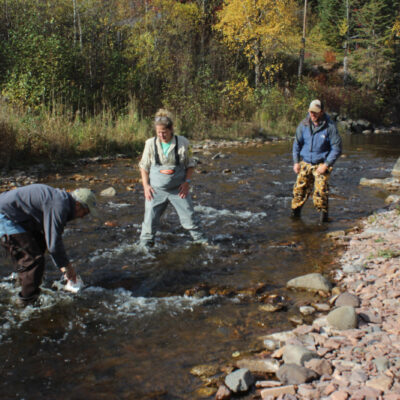‘Rock snot’ algae arrives in more North Shore rivers
In 2018, WTIP and the Minnesota Department of Natural Resources advised anglers and hikers to be aware that a species of freshwater algae called didymo, also known as “rock snot,” was identified in the Poplar River near Lutsen.
News that the algae was in the river meant it moved beyond the Lake Superior splash zone where it was previously documented. In fact, this type of algae is present in low densities in Lake Superior, but was not previously documented in North Shore streams or rivers at any point in history.
According to the DNR, the freshwater algae live in low nutrient, low-temperature environments that are common in North Shore streams and Lake Superior. Under the right conditions, this type of algae can form dense mats of brown slime that smother streambeds, according to the DNR. It is also quite unpleasant by physical appearance, though it does not present a danger to humans. That being the case, in the summer of 2020, it was being confused for toilet paper and human waste floating in Lake Superior.
This year, the situation got worse.
Rock snot has now been confirmed, for the first time, in the Caribou, Devil Track and Onion rivers. It was also found in a collection of smaller stream and rivers along the North Shore.
WTIP was invited to join three researchers on the Devil Track River as reports of the algae spreading in North Shore streams is being reported. State researchers Mark Edlund, Adam Heathcote and Heidi Rantala met WTIP’s Joe Friedrichs near the mouth of the Devil Track River Oct. 20 to share information about the recent outbreak of rock snot in North Shore streams and rivers. The audio below is a featured produced on the Devil Track River.
Researchers from the Science Museum of Minnesota and the DNR are asking the public to report any sightings of didymo to an online database. Click here to submit any sightings of rock snot along the North Shore.
Click here to learn more about didymo.
















